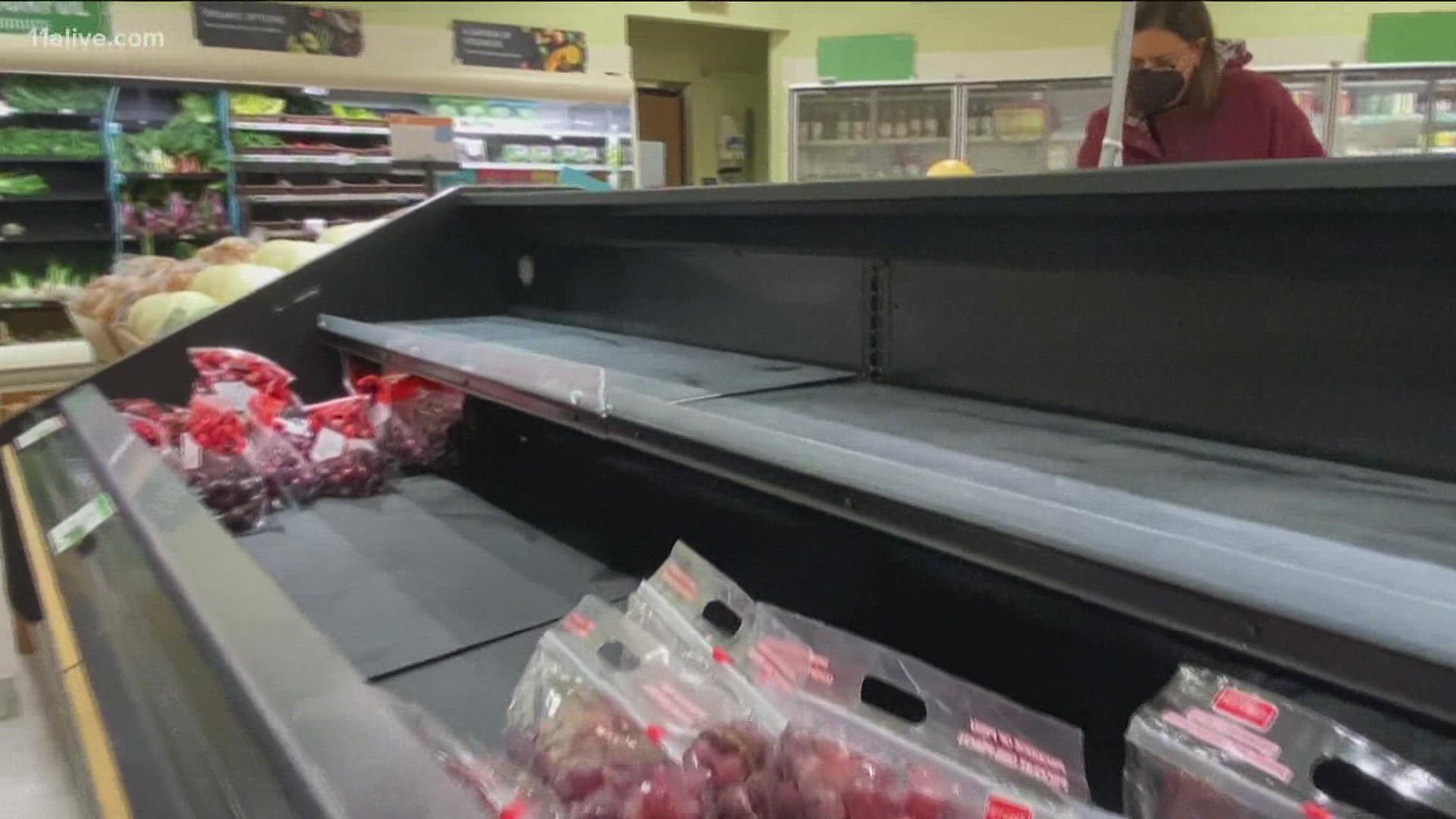ATLANTA — Grocery store inventories are down. Prices are up. Supply-chain economists believe the supermarket shortages will ease by the end of the year.
Morgan McCowan sees the empty shelves every day.
She shops for a living in the supermarkets, for customers who give her their grocery lists and then expect her to deliver it all to them.
“And it’s kind of annoying when I go to the stores and the shelves are empty,” she said as she loaded another order into her SUV. “The customers are like, ‘where’s everything at?’ they don’t have anything.”
And McCowan said there’s no predicting which shelves will be empty of which products on any given day, or which supermarkets will be out of items that other supermarkets have.
“We just need to get the supply chain fully-employed, and everybody back to work” said Doug Baker, Vice President of Industry Relations at FMI, The Food Industry Association.
Baker said the COVID-19 omicron variant is decimating the work force at every stage of the supply chain--workers throughout the system calling in sick--which slows down different parts of the supply chain at different times, causing a ripple effect all the way to the end of the chain, at the supermarket shelves.
The pandemic surge, he said, is creating shortages of ingredients to make the foods, and reducing staff to operate the food processing plants, and interrupting the businesses that make the packaging for the foods, and reducing the numbers of interstate and local truck drivers to deliver the foods to the retailers, and stretching thin the numbers of people needed to unload the trucks and stock the shelves.
And as wholesale prices go up, supermarket managers can’t always afford to buy as much inventory as they did when they were able to fill all their shelves.
“It’s not broken. The food is in the supply chain,” Baker said. “Unfortunately, because we’re not fully employed because we’re dealing with this virus, it gets stuck, it gets stuck along the supply chain, and it’s taking longer. You know, something that might have been two to four weeks to get is now eight to twelve weeks to get.”
Supply chain economists expect that as soon as the omicron variant peaks, the supply chain will begin to recover--just as it was starting to do after the delta variant peaked last year.
“It’s going to take a while for the supply chains to recalibrate and re-fill all the way to the store,” Baker said. “We’re probably not going to see any significant relief until the back half of 2022.”
Not soon enough for Morgan McCowan, or her customers.
“If I walk into a store and all the shelves are empty, I’m not going to be able to get all their items for them, and so it’s kind of disappointing.”
All she can do, she said, is hope for better, soon.

